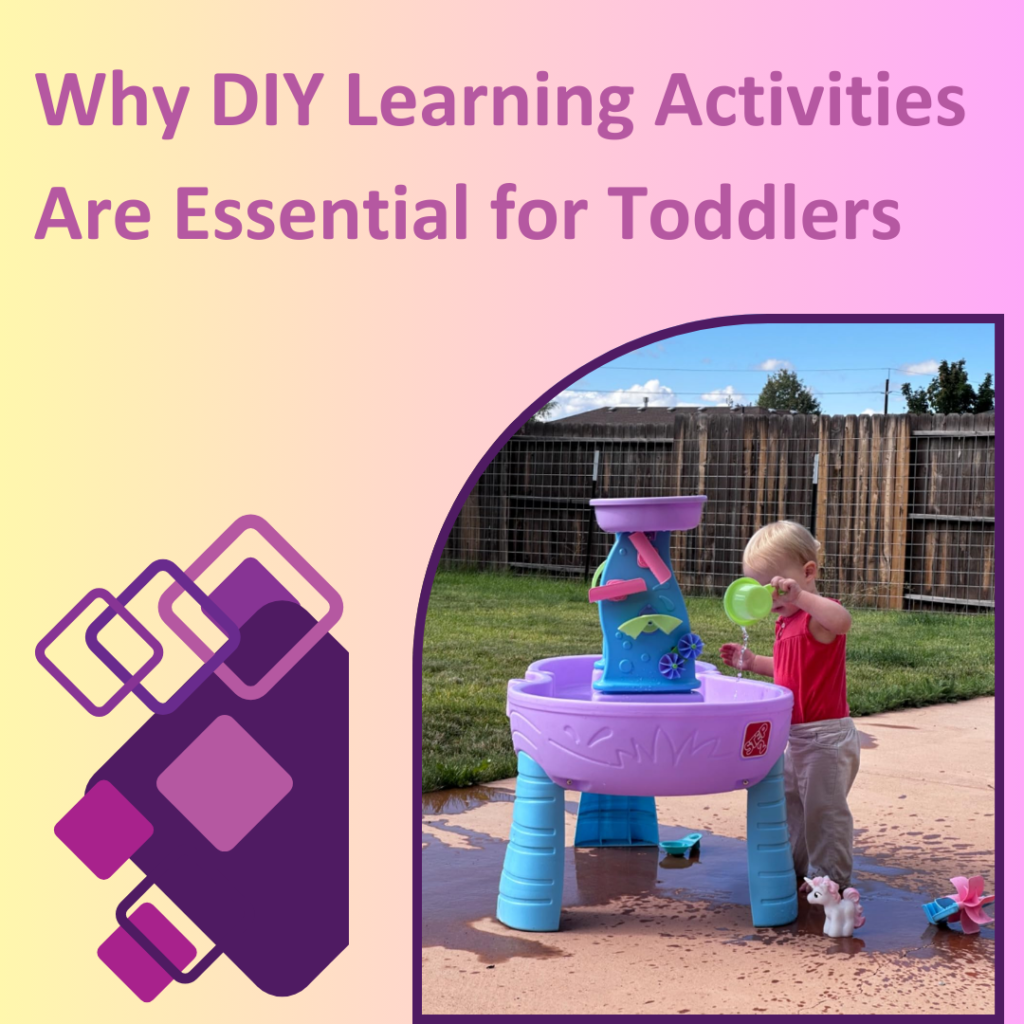Remember those moments when your toddler is completely absorbed in a simple activity, like stacking blocks or exploring a cardboard box? I’ve witnessed this countless times, both as a parent and as an early childhood educator. My daughter, Lily, could spend hours building intricate towers with blocks, completely engrossed in the process. These seemingly simple activities are actually powerful learning experiences, and that’s why DIY learning activities are so essential for toddlers. This post will delve into the profound benefits of DIY learning, offering practical tips, addressing common concerns, and empowering you to create a stimulating and enriching environment for your little one, whether you’re at home, on a road trip, or even just packing diaper bag essentials.

Core Topic Discussion: Fostering Growth Through Hands-On Exploration
DIY learning activities are more than just fun; they’re crucial for a toddler’s development. They provide opportunities for hands-on exploration, allowing children to learn through direct experience. This type of learning is far more effective than passive methods, as it engages multiple senses and encourages active participation. When toddlers are actively involved in creating, building, and exploring, they’re not just absorbing information; they’re constructing their own understanding of the world.
From my experience working with toddlers, I’ve seen firsthand how DIY activities can spark creativity, problem-solving skills, and critical thinking. For example, a simple activity like creating a sensory bin filled with different textures can help toddlers develop their fine motor skills, learn about different materials, and even expand their vocabulary. These activities are especially important for toddlers because they are at a crucial stage of development where they are learning at an incredible rate.
Expert Tips & Actionable Advice: Crafting Meaningful Learning Experiences
Creating effective DIY learning activities doesn’t require a lot of fancy materials or complicated setups. Here are some actionable tips:
- Keep it Simple: Don’t feel pressured to create elaborate projects. Simple activities like sorting objects by color or shape, building with blocks, or playing with playdough can be incredibly beneficial.
- Embrace the Mess: Messy play is often the most engaging and educational. Let your toddler explore with paint, playdough, or even just water and sand. The sensory experience is invaluable. Just remember to choose activities appropriate for the setting, whether it’s daycare, a road trip, or even camping.
- Follow Your Child’s Lead: Observe what interests your child and tailor your activities accordingly. If they’re fascinated by animals, create animal-themed activities. If they love music, explore different sounds and instruments.
- Incorporate Everyday Activities: Turn everyday tasks into learning opportunities. While grocery shopping, talk about the different fruits and vegetables. While cooking, let your toddler help with simple tasks like stirring or measuring. Even packing your diaper bag essentials can become a learning experience by naming and discussing each item.
- Plan Ahead for Travel: When planning a road trip or plane travel, prepare some simple, portable DIY activities to keep your toddler entertained and engaged. A small bag of playdough, some crayons and paper, or even a collection of small toys can be a lifesaver. Creating a packing list together can also be a fun learning activity. Summer essentials like bubbles and sidewalk chalk also offer great learning opportunities.
- Utilize Resources: There are countless resources available online and in libraries for DIY learning activity ideas. Explore and find activities that suit your child’s age and interests.
Mistakes to Avoid:
- Over-Stimulation: Too many activities or too much stimulation can overwhelm your toddler. Keep things simple and allow for downtime.
- Pressure to Perform: Don’t pressure your child to achieve specific learning outcomes. The focus should be on exploration and enjoyment.
- Comparing Your Child to Others: Every child develops at their own pace. Don’t compare your child to others and celebrate their individual progress.
Common Questions & Misconceptions: Addressing Your Concerns
- Q: Are DIY activities only for stay-at-home parents? A: Absolutely not! Even busy parents can incorporate DIY learning into their routine. The key is to be intentional and find creative ways to weave learning into everyday activities, whether it’s during childcare hours or during short pockets of time at home.
- Q: What if my child makes a mess? A: Messy play is a crucial part of learning. Embrace the mess and provide a designated space for messy activities. You can also involve your child in the cleanup process, which is a learning experience in itself.
- Q: How do I know if the activity is age-appropriate? A: Consider your child’s developmental stage and interests. Start with simple activities and gradually introduce more complex ones as your child’s skills develop.
Misconception: DIY learning is only about arts and crafts. While arts and crafts are a great part of DIY learning, it also encompasses a wide range of activities, including sensory play, building, problem-solving, and even pretend play.
Recommended Tools, Resources & Product Insights: Enhancing Your DIY Journey
- Books: “The Whole-Brain Child” by Daniel J. Siegel and Tina Payne Bryson, “Playful Parenting” by Lawrence J. Cohen
- Websites: ToddlerAwesome.com (for expert advice on toddler gadgets and learning resources), Pinterest (for DIY activity ideas)
- Materials: Construction paper, paint, playdough, crayons, blocks, recycled materials (cardboard boxes, plastic containers), natural materials (leaves, rocks, sticks)
- Products: Melissa & Doug toys (known for their educational value), Osmo (interactive learning games)
Disclaimer: As the founder of ToddlerAwesome.com, I may receive a small commission for purchases made through affiliate links. However, all product recommendations are based on my personal experience and expertise.

Case Study or Real-Life Application: Lily’s “DIY Road Trip Fun”
On a recent road trip, I packed a small bag of DIY activities for Lily. One of the activities was a simple “I Spy” game using pictures of common objects that we would see along the way. This kept her entertained and engaged throughout the drive, while also helping her develop her observation skills and vocabulary. This experience highlighted how even simple DIY activities can be incredibly beneficial, especially during travel.
Conclusion & Call to Action: Embracing the Power of Playful Learning
DIY learning activities are essential for toddlers because they provide opportunities for hands-on exploration, fostering creativity, problem-solving skills, and a love of learning. By incorporating DIY activities into your daily routine, you can create a stimulating and enriching environment for your child, no matter where you are.
What are some of your favorite DIY learning activities for toddlers? Share your ideas in the comments below! Let’s inspire each other and create a community of parents passionate about fostering a love of learning in our little ones. Don’t forget to share this article with other parents who might find it helpful!

Clark Lubowitz is a parenting expert with over 10 years of experience in toddler care and child development. Holding a degree in Early Childhood Education, he specializes in blending modern technology with parenting, offering expert advice on the best toddler gadgets. Through his work on ToddlerAwesome.com, Clark provides valuable insights to help parents make informed decisions for their little ones.
